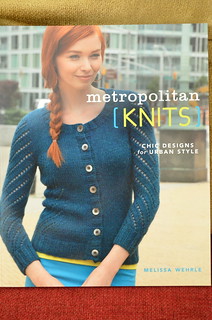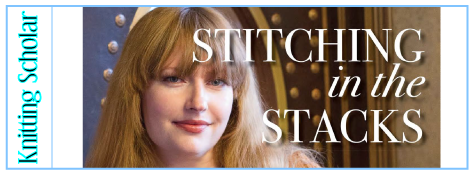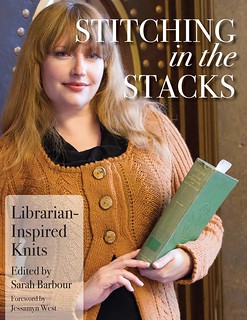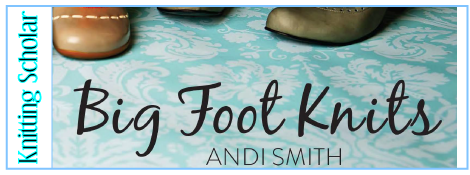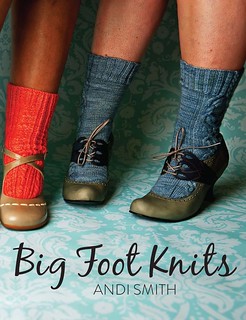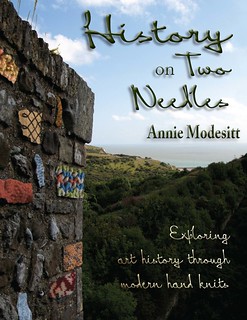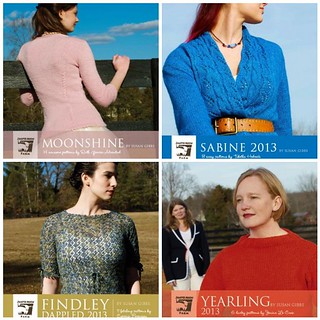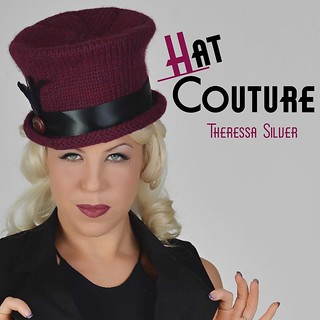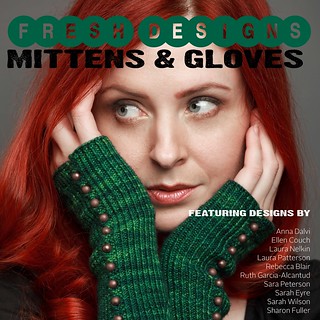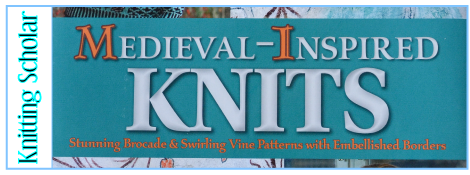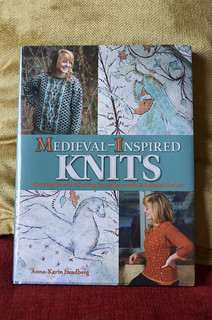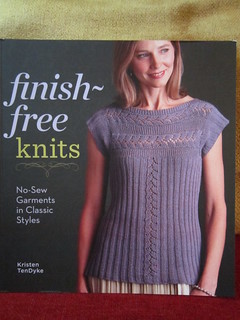So first, thank you for stopping by and answering questions about your new book. It’s absolutely adorable. Is it everything you hoped it would be?
Thank you so much for having me, I am excited to see what kind of questions you have in store for me. The book is everything I had hoped it would be and more. The book has 38 patterns, which I like to call my Magnum Opus. I always think back to when I wrote the proposal and I can never fathom how I thought I could write and knit 38 patterns in just one year!
Was it as much fun as it seems, coming up with matching patterns for kids and for their dolls? Or did you find it more challenging than you thought?
I started out with a little outline of what I had in my head such as “cabled vest” “bottom up seamless with something fair isle on the yoke, military style jacket” and I sketched everything out from there. I made modifications to stitches and changed yarn as needed but for the most part I didn’t find that part to be a struggle. It was more just time that was the challenge for me. With two children 4 and under at the time, that was the true challenge. My kids are both fairly active and my little one doesn’t often allow me to sit still for very long. This makes knitting a challenge. It was lots of fun sketching, I enjoyed that part quite a bit.
Tell me about these absolutely fantastic dolls. I want to just reach through the pages and hug all of them.
Oh, yes, that is the best part isn’t it! It was Bamboletta that started it all for me, and later I found Fig & Me. When I was pregnant with my little one I had fallen in love with the dolls at bamboletta.com so I had ordered a special custom one to look just like Sydney, my oldest daughter. They made her blonde haired and blue eyed with pale skin. She was perfect.
So I had become a Bamboletta stalker, watching for doll “uploads” on their website. I think I had collected 2 or 3 when I designed a little jacket for them (the Katie Garter Jacket now in the book!) and the book idea was born from there, fully inspired by the dolls from the start. All of the dolls featured in the book (including the group shot in the back) are a waldorf-ish inspired doll style. Each doll maker has a unique style and I love that, it’s similar to how you know clothing is from a certain designer or a painting is from a certain artist, I do think each individual style is that powerful and I can identify who made the dolls just by looking at it. I think of each doll as a little work of art. The amount of work that goes into some of these dolls from their outfits to the accessories is amazing.
Do you have a favorite pattern in the book?
The owl hat and sweater are very dear to me and I had a lot of fun designing the little owl on my iPad using a pixel art application (basically like an excel grid and you paint with colors in each block). The hat was actually the swatch and shows up in a personal photo in the intro section of the book. I just adore those little owls. In my head I’ve designed about 1,000 other things with that chart. I’m dying to knit my little one a version in fun bright colors.
I’ve followed your blog since, well, years ago when you were still podcasting about spinning and knitting. Did you ever think that would evolve into a book?
When I first started blogging I had some knitter friends who told me I needed to design (mostly because I complained about the lack of seamless kids knits). I can actually recall one of those conversations and I remember thinking, “Yeah sure that would be neat but I’ll never do that.” I did not see it coming, it was just one of those things that evolved naturally over time, once I started designing I began thinking a book would be fun but I did not have any unique ideas for the book. That is the trick with books, an idea that will set something apart from what has been done before, or at least it was for me. I knew I would have a special opportunity to be able to walk up to a publisher at TNNA and ask for their time, but I needed a good idea. I still miss podcasting!
I’ve also followed your posts on photography, and am still awed by your skills. The photos in the book are perfection—any tips for those of us without your experience? (Because yes, I loved the photos in the book. Some of them deserve to be framed, they’re so wonderful.)
You are too kind, thank you! My father is a photographer so I grew up surrounded by it so that is most certainly an advantage. I actually wind up giving lots of photography tips to people we publish in Petite Purls (www.petitepurls.com) because we allow designers to choose to photograph their own work if they want, but we are pretty picky about the quality of photography. We’ve had designers re-shoot 3 or 4 times to get it right. The advice I most often give is to go outside in very large shaded areas, make sure the background doesn’t have any bright sunlight. Get low and get close. Shoot on cloudy days so you get less harsh shadows or around sunset when everything glows. Inside is okay but you have to be near large windows and natural light, arrange the person you are photographing so they face the window, and then stand in front of or beside the window so your back is to the light and the subject is facing the light. Find the light. Take a photo of someone, then go stand behind them and take the photo from the opposite side (turn them around!), then look and see which photo is better. Take photos in more then 1 place. Find the light.
Speaking of spinning—because you used to post about it a lot—do you still find time to spin? Or has that craft fallen by the wayside with the kids, knitting, writing, photography and everything else you do?
My Ashford Joy is safe and sound up in the closet of my bedroom. I’m waiting for my little one to turn 4. There will be less chance of it getting broken if I am patient and wait a little longer. I love to spin, my favorite fiber is combed shetland top or BFL. Now when I go to fiber festivals (like Maryland Sheep & Wool) I focus on buying roving instead of yarn. I have a few spindles, but I prefer the wheel. I want a Schacht Ladybug one day, our a portable Majacraft.
What’s your next project? (Or are you still catching your breath from this one?)
I took a pretty decent design/knitting break once I began the editorial process with the book and a bit after. Right now I am working on a sweet slouchy hat pattern, but I actually have to knit a few more samples from the book for various events so I think that will keep me busy. I have some other ideas I’ve worked on when things are calm, and eventually those will be something I can share!
How do your kids feel about being your models? Do they ever gripe about it? Ask for special, diva-ish, super-model-type treats or bribes? Or are they are sweet in person as they look in the photos?
Both of my girls have been modeling hand-knits from birth so they are used to it and don’t even think to ask for anything in return (though I sometimes give them candy or small goodies). In our house its a lot like cleaning your room, it’s something you have to do and sometimes it results in a treat and sometimes it doesn’t. The most ironic thing was the girls got so used to the dolls being “book” dolls and some clothing being “book outfits” that they didn’t try to play with them or ever ask to wear them. That totally weirded me out, but it makes sense. They knew I treated the items with care and had to be careful, and so they did too.
If everything else were equal and you had all the time in the world, what would you choose to knit next? Something for you? Your husband? Or would you still focus on the kids?
I would most likely knit something for them, I don’t think my husband would wear much beyond a hat. I would love to knit some socks for myself but I doubt I’ll ever get around to it. I have about 100 things I would like to knit for myself but I always wind up knitting for the girls.
You say in the book that you started knitting when a crochet class you’d signed up for turned out to be a knitting class. Have you ever considered going back and trying crochet?
I love crochet, I actually wanted to have crochet in the book. I’m awful at following complex written patterns but I have crochet edging in the book a few places, and I would choose to crochet a blanket before I knit one, without doubt! The knit chevron blanket in the book was in my original vision, a ripple crochet blanket. I suppose that could be another book :) Publishers are very careful about mixing crafts in books, I was very pleased to be able to have the sewing patterns included in the book.
What other crafts would you like to do (practical or impractical)?
Hah, I love that. For impractical, screen printing and crazy messy calligraphy. Typesetting old school style. I love layout and typography. I love wrapping presents, I would love a whole space/studio set up just for wrapping things in lovely ways. I love pastel paints, and charcoal. Charcoal is a favorite, but it’s so messy with kids around–heck it’s messy even without kids around. If I had a proper shed I would. I’m about to set up a darkroom in my garage this spring with the help of my father. :) I would consider that a craft, it’s very physical. I love to try new things and explore. I love to sew and wish I had a hand-sewing mentor so I could master it.
Are there any crafts that you tried that you didn’t like? (Like, say, me and painting?)
Scrapbooking (I would rather do it in a computer), making jewelry (too tedious) using a serger (I can’t thread it).
When you talk about the dolls in your book, you mention how special handmade dolls can be—have you tried making them yourself? Would you consider putting that into a book next? Dolls, their clothes, and matching items for the kids?
I have a head of a doll I started :) I would have liked to have worked on it more, I found a kit online and it came with everything. I can’t have sharp 5 inch needles any place in my house, my 3 year old will find them, and if I hide things too well I forget where I’ve hidden them. I will leave any doll making books to people like Bamboletta and Fig & Me, they are masters at it and know far more then I ever could!
When not knitting, taking pictures, doing housework or kid-wrangling, what do you like to do to relax? (I know, this probably comes out to about 5 minutes a month, but…)
My husband and I watch a lot of sci-fi, and I watch him play video games; I knit while he plays. I would like to go out with my husband, we don’t get to do that enough so that is something I would like to do more of, eventually! I occasionally sneak away into the bathtub and read, a wonderful thing.
Favorite books?
The Lost King by Margaret Weis, the Harry Potter series and Edgar Allen Poe are my all time favorites, biographies and non-fiction. I read a lot of random things, from healthy/diet, education and history to technology and cognitive sciences. Here is what is currently on my Kindle: Along the Way: The Journey of a Father and Son by Martin Sheen and Emilio Estevez, A Tale of Two Cities by Charles Dickens, The Learners by Chip Kidd, The Boy Kings by Katherine Losse, Bowling Avenue by Ann Shayne
Do you listen to music while you knit? Watch television? Or are you too busy keeping one ear on your daughters to allow the distraction?
I like to watch movies while I knit, Netflix is my friend! I like to find a tv series and then knit through a season! I spent way to much money on amazon instant video while working on the book!
Of all the things you’ve made over the years, what are you proudest of? (You know, other than your daughters)
The book is something I am very proud of, and my career outside the knitting world. I spoke at a web conference in Australia, and at many smaller events in Atlanta prior to having the kids. I am very proud of those accomplishments.
My dog Chappy would be disappointed if I didn’t ask you about any pets?
We have Toby, our 10 year old Shetland Sheep Dog. He’s a sweetie and puts up with the kids’ antics. Right before we had the kids, we got a second dog to be Toby’s friend, but Toby as it turned out did not want a friend. :) She lives with my mother-in-law now, she is a very sweet and energetic Golden Retriever named Willow. She appeared on the blog many times, back in the day!
What’s your favorite breakfast food?
Egg Cake! The recipe is on my blog.
If you had an extra two hours in the day, what would you do with them?
Sleep!!
Name one yarn you’ve never tried but would love to knit with.
I’ve been very lucky to get my hands on many different types of yarn over the years. I knit with Sea Silk by Handmaiden once and would love to try more of their yarns, or maybe the new Lorna’s Haymarket. Brooklyn Tweed Loft is probably just as nice as Shelter, or Green Mountain Spinnery.
What is the one thing you would want to say to a new knitter?
Don’t give up! Keep trying, find other knitters, online or in real life.
If you could have a superpower (knitting or otherwise), what would it be?
Oh boy, I would be able to make any child fall soundly and pleasantly asleep simply by singing Twinkle Little Star or by rubbing their arm. It would happen in 60 seconds or less. Not only could I benefit from this, but I would gladly help out any other moms who want to make bedtime a snap. I would be like super Mary Poppins.
Since this IS a site for book reviews–two questions: What do you look for in a book review?
Some interesting details about the book I would not get from reading the back cover, so I get more information before making a buying decision.
Any questions that you WISH someone would ask you? If so, what’s the question–and what’s the answer?
This is a hard one. I don’t really have anything in particular I would like to be asked, I am just pleased to be interviewed to begin with. Thank you for thinking of all the wonderful questions, I particularly enjoyed the non-knitting related ones!
Thank you!
Thanks so much,
Books (so far):
Other posts for this author:




